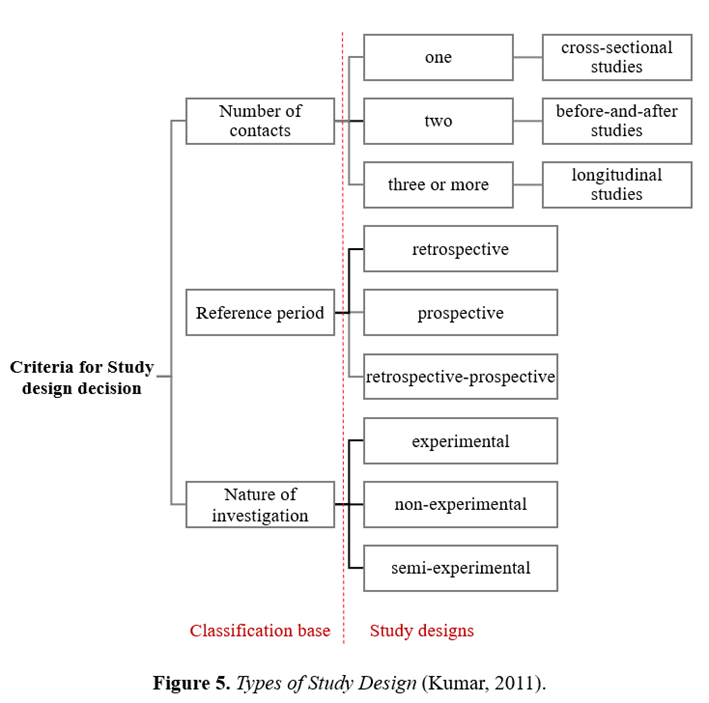Information

In research, there are two primary quantitative strategies: surveys and experiments.
Surveys examine a sample to obtain numerical representations of its own population's trends, attitudes, or opinions. Researchers can conduct cross-sectional or longitudinal studies using questionnaires or structured interviews to collect data and generalize the results to a larger population.
On the other hand, experimental research aims to determine whether a specific treatment affects an outcome. This is achieved by administering the treatment to one group while withholding it from another and then measuring the outcomes of both groups. Examples of experiments include assigning subjects to treatment conditions at random and non-randomized quasi-experiments, which may involve single-subject designs.
Kumar (2011) organizes these “decisions” based on three criteria (Fig. 5):
